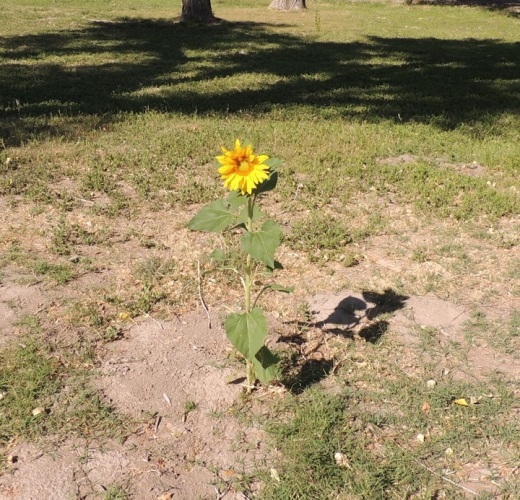As we all know, the season is winding down so here is the campground excitement today: an invasive species!! On a park service website the finer definitions of non-native, exotic or invasive are raised. Whether an exotic/non-native is considered invasive is the crux of the matter. The example given is a tree called the Saltcedar or Tamarisk. It is considered invasive because of its impact on the environment. Originally brought into Big Bend to provide a windbreak and combat erosion its effect has been more negative than originally anticipated. According to NPS, “this tree is know to evaporate significant amounts of water, much more than a like sized cottonwood or willow would in a day. Equally depressing is the rate of spread for this plant, which has been known to resist cold temperatures, fire, floods, and drought.”
I have seen a lot of manpower (the park biologist working with the Sierra Club, Student Conservation Corps and park staff) cutting down Tamarisk to try to eradicate it along the shores of the Rio Grande.
The park service is always trying to combat various invasive species. For instance, native vs. non-native cane along the river; bullfrogs; buffalo grass which out competes and has less nutritional value than native grasses among other examples.
Today I noticed something which had popped up overnight in one of our campsites. I asked Raymond Skiles, park biologist, whether to let it live or destroy it. His answer was succinct: “admire it a few days, take pictures, and when a minimum of folks are in the area, then yank’ ‘er up. It’s not a huge threat,but we wouldn’t want it going to seed and possibly starting more.” Here is our little exotic along with its current disposition:
Another thing that many people don’t know about is how the firewood they transport across the country can spread diseases, pests, etc. Some areas and parks across the country have “burn it where you buy it” campaigns. Although Big Bend does not have an official program – probably because it does not allow wood fires and because not much can survive the desert environment – transportation of fire wood is a concern for folks “in the know”.
For instance, recent campers from the Chicago area had brought about 300# of firewood with them. Anyone from the Chicago area knows of the devastation caused by the Emerald Ash Borer beetle. The campers asked if they could leave the firewood so I put it in a Maintenance laydown area and let park officials know that it was essentially “impounded” there. Although it is unlikely that the Emerald Ash Borer would survive the desert environment, one does not know for certain. Another camper turned in wood brought from his home south of Yosemite. As I unloaded it from the truck to the impound area I noticed that it was infested with ants – ours or Yosemite’s?
Frequently, park workers are looking for firewood for their homes in communities close to Big Bend. Sometimes they are thinking of transporting the wood to other states not realizing how they could be spreading bugs or other living organisms which could be considered “invasive” in their new environments.
This issue is not as dramatic as portrayed in movies like “Contagion” but is equally important to our environment. Something to think about . . . Good night!


Great explanation Amy. Could make a good handout.